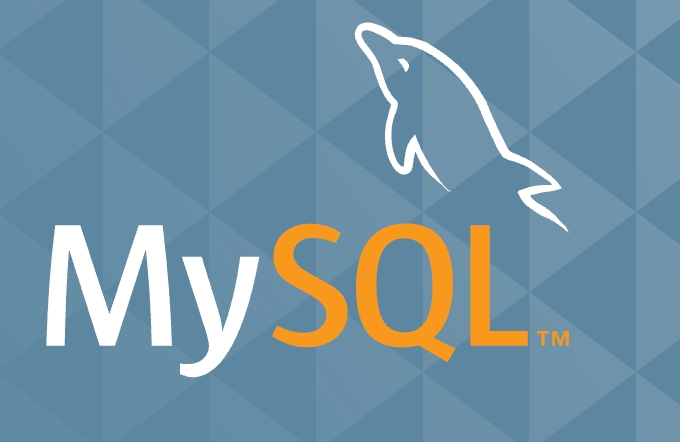To connect to the MySQL database, first install the pymysql library, use pip or conda to install; then establish a connection through the connect() method and create a cursor; then execute SQL statements and get the results; finally close the connection or use the context manager to automatically release the resources. Frequently asked questions include username and password errors, host IP errors, firewall restrictions, and database services not running. You can check the configuration and print exception information. It is recommended to use utf8mb4 to avoid garbled code for character sets.

Connecting to MySQL databases is a very common requirement in Python development, especially when doing back-end development or data analysis. Python itself does not have the MySQL driver, but there are many third-party libraries that can help us implement this function.

Next, I will talk about how to connect to MySQL database in Python step by step.
Install the necessary libraries
Python To connect to MySQL, you need to first install a driver that supports MySQL. Commonly used are mysql-connector-python and pymysql . The usage of the two is similar. Here we take pymysql as an example.

You can use pip to install:
pip install pymysql
If you are using the Anaconda environment, you can also use conda to install:

conda install -c anaconda pymysql
After the installation is complete, you can start writing code.
Use PyMySQL to establish a connection
After installation, the next step is how to connect to the database using Python. The basic process is as follows:
- Import module
- Use
connect()method to establish a connection - Create a cursor object to execute SQL
- Get results or submit changes
- Close the connection
The sample code is as follows:
import pymysql
# Create a connection conn = pymysql.connect(
host='localhost',
user='your_username',
password='your_password',
database='your_database',
port=3306,
charset='utf8mb4'
)
# Create cursor cursor = conn.cursor()
# Execute the query statement cursor.execute("SELECT * FROM your_table")
# Get results = cursor.fetchall()
for row in results:
print(row)
# Close the connection cursor.close()
conn.close()Note: host does not necessarily mean localhost, it may also be the remote server IP; the default port is 3306, if it is not the default port, remember to change it.
Handle FAQs and Precautions
Not connecting to the database is one of the common problems encountered by novices. There are several possible reasons:
- Username and password error : The most common reason, especially remote databases, has stricter permission settings.
- The host name or IP is written incorrectly : Confirm whether the host is correct and whether remote access is allowed.
- Firewall restrictions : Some cloud servers (such as Alibaba Cloud and Tencent Cloud) do not open port 3306 by default, and security group rules need to be manually configured.
- Database service not running : If it is a local database, make sure that the MySQL service has been started.
- Character set problem : If you operate Chinese data, it is recommended to use utf8mb4 encoding, otherwise garbled code may occur.
If you are not sure where something went wrong, you can print exception information to help troubleshoot:
try:
conn = pymysql.connect(...)
except Exception as e:
print("Connection failed:", e)Optional: Automatically close the connection using the context manager
To prevent forgetting to close the connection, you can use the with context manager to automatically handle it:
with pymysql.connect(...) as conn:
with conn.cursor() as cursor:
cursor.execute("SELECT VERSION()")
print(cursor.fetchone()) This way, there is no need to call .close() manually, and Python will automatically help you with the resource release.
Basically that's it. Connecting to the database seems simple, but you may encounter various environmental configuration problems in the actual process. You can get familiar with it by trying a few more times.
The above is the detailed content of how to connect to mysql database from python. For more information, please follow other related articles on the PHP Chinese website!

Hot AI Tools

Undress AI Tool
Undress images for free

Undresser.AI Undress
AI-powered app for creating realistic nude photos

AI Clothes Remover
Online AI tool for removing clothes from photos.

Clothoff.io
AI clothes remover

Video Face Swap
Swap faces in any video effortlessly with our completely free AI face swap tool!

Hot Article

Hot Tools

Notepad++7.3.1
Easy-to-use and free code editor

SublimeText3 Chinese version
Chinese version, very easy to use

Zend Studio 13.0.1
Powerful PHP integrated development environment

Dreamweaver CS6
Visual web development tools

SublimeText3 Mac version
God-level code editing software (SublimeText3)

Hot Topics
 What is the default username and password for MySQL?
Jun 13, 2025 am 12:34 AM
What is the default username and password for MySQL?
Jun 13, 2025 am 12:34 AM
The default user name of MySQL is usually 'root', but the password varies according to the installation environment; in some Linux distributions, the root account may be authenticated by auth_socket plug-in and cannot log in with the password; when installing tools such as XAMPP or WAMP under Windows, root users usually have no password or use common passwords such as root, mysql, etc.; if you forget the password, you can reset it by stopping the MySQL service, starting in --skip-grant-tables mode, updating the mysql.user table to set a new password and restarting the service; note that the MySQL8.0 version requires additional authentication plug-ins.
 What is GTID (Global Transaction Identifier) and what are its advantages?
Jun 19, 2025 am 01:03 AM
What is GTID (Global Transaction Identifier) and what are its advantages?
Jun 19, 2025 am 01:03 AM
GTID (Global Transaction Identifier) ??solves the complexity of replication and failover in MySQL databases by assigning a unique identity to each transaction. 1. It simplifies replication management, automatically handles log files and locations, allowing slave servers to request transactions based on the last executed GTID. 2. Ensure consistency across servers, ensure that each transaction is applied only once on each server, and avoid data inconsistency. 3. Improve troubleshooting efficiency. GTID includes server UUID and serial number, which is convenient for tracking transaction flow and accurately locate problems. These three core advantages make MySQL replication more robust and easy to manage, significantly improving system reliability and data integrity.
 How to change or reset the MySQL root user password?
Jun 13, 2025 am 12:33 AM
How to change or reset the MySQL root user password?
Jun 13, 2025 am 12:33 AM
There are three ways to modify or reset MySQLroot user password: 1. Use the ALTERUSER command to modify existing passwords, and execute the corresponding statement after logging in; 2. If you forget your password, you need to stop the service and start it in --skip-grant-tables mode before modifying; 3. The mysqladmin command can be used to modify it directly by modifying it. Each method is suitable for different scenarios and the operation sequence must not be messed up. After the modification is completed, verification must be made and permission protection must be paid attention to.
 What is a typical process for MySQL master failover?
Jun 19, 2025 am 01:06 AM
What is a typical process for MySQL master failover?
Jun 19, 2025 am 01:06 AM
MySQL main library failover mainly includes four steps. 1. Fault detection: Regularly check the main library process, connection status and simple query to determine whether it is downtime, set up a retry mechanism to avoid misjudgment, and can use tools such as MHA, Orchestrator or Keepalived to assist in detection; 2. Select the new main library: select the most suitable slave library to replace it according to the data synchronization progress (Seconds_Behind_Master), binlog data integrity, network delay and load conditions, and perform data compensation or manual intervention if necessary; 3. Switch topology: Point other slave libraries to the new master library, execute RESETMASTER or enable GTID, update the VIP, DNS or proxy configuration to
 How to connect to a MySQL database using the command line?
Jun 19, 2025 am 01:05 AM
How to connect to a MySQL database using the command line?
Jun 19, 2025 am 01:05 AM
The steps to connect to the MySQL database are as follows: 1. Use the basic command format mysql-u username-p-h host address to connect, enter the username and password to log in; 2. If you need to directly enter the specified database, you can add the database name after the command, such as mysql-uroot-pmyproject; 3. If the port is not the default 3306, you need to add the -P parameter to specify the port number, such as mysql-uroot-p-h192.168.1.100-P3307; In addition, if you encounter a password error, you can re-enter it. If the connection fails, check the network, firewall or permission settings. If the client is missing, you can install mysql-client on Linux through the package manager. Master these commands
 How does InnoDB implement Repeatable Read isolation level?
Jun 14, 2025 am 12:33 AM
How does InnoDB implement Repeatable Read isolation level?
Jun 14, 2025 am 12:33 AM
InnoDB implements repeatable reads through MVCC and gap lock. MVCC realizes consistent reading through snapshots, and the transaction query results remain unchanged after multiple transactions; gap lock prevents other transactions from inserting data and avoids phantom reading. For example, transaction A first query gets a value of 100, transaction B is modified to 200 and submitted, A is still 100 in query again; and when performing scope query, gap lock prevents other transactions from inserting records. In addition, non-unique index scans may add gap locks by default, and primary key or unique index equivalent queries may not be added, and gap locks can be cancelled by reducing isolation levels or explicit lock control.
 How to alter a large table without locking it (Online DDL)?
Jun 14, 2025 am 12:36 AM
How to alter a large table without locking it (Online DDL)?
Jun 14, 2025 am 12:36 AM
Toalteralargeproductiontablewithoutlonglocks,useonlineDDLtechniques.1)IdentifyifyourALTERoperationisfast(e.g.,adding/droppingcolumns,modifyingNULL/NOTNULL)orslow(e.g.,changingdatatypes,reorderingcolumns,addingindexesonlargedata).2)Usedatabase-specifi
 What is the purpose of the InnoDB Buffer Pool?
Jun 12, 2025 am 10:28 AM
What is the purpose of the InnoDB Buffer Pool?
Jun 12, 2025 am 10:28 AM
The function of InnoDBBufferPool is to improve MySQL read and write performance. It reduces disk I/O operations by cacheing frequently accessed data and indexes into memory, thereby speeding up query speed and optimizing write operations; 1. The larger the BufferPool, the more data is cached, and the higher the hit rate, which directly affects database performance; 2. It not only caches data pages, but also caches index structures such as B-tree nodes to speed up searches; 3. Supports cache "dirty pages", delays writing to disk, reduces I/O and improves write performance; 4. It is recommended to set it to 50%~80% of physical memory during configuration to avoid triggering swap; 5. It can be dynamically resized through innodb_buffer_pool_size, without restarting the instance.






